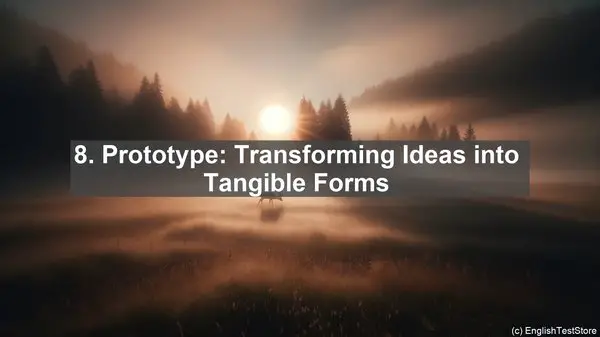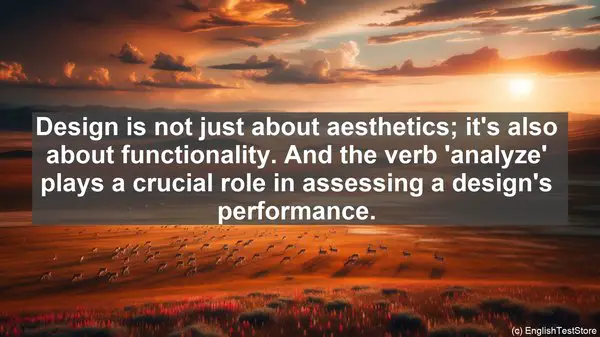Introduction: The Importance of English Verbs in 3D Modeling and Prototyping
Hello everyone, and welcome to today’s lesson! When it comes to 3D modeling and prototyping, having a strong command of English verbs is crucial. These verbs not only help you express your ideas clearly but also enable effective collaboration with team members. So, without further ado, let’s explore the top 10 English verbs that will elevate your communication skills in this field.
1. Create: Giving Shape to Your Ideas
The verb ‘create’ lies at the heart of 3D modeling and prototyping. It signifies the process of giving form and structure to your ideas. Whether you’re designing a product or a virtual environment, ‘create’ is the verb that initiates the journey. From sketching the initial concept to refining it digitally, ‘create’ encompasses the entire creative process.
2. Modify: Iterating and Enhancing Designs
In the world of 3D modeling, designs are rarely static. They evolve, adapt, and improve. That’s where the verb ‘modify’ comes into play. It represents the action of making changes to a design, be it altering its dimensions, adjusting its appearance, or refining its functionality. ‘Modify’ ensures that your designs are always in a state of constant improvement.

3. Simulate: Testing and Analyzing
Before a 3D model becomes a physical prototype, it undergoes rigorous testing. And the verb ‘simulate’ is instrumental in this phase. It refers to the process of creating a virtual environment that mimics real-world conditions. By simulating factors like stress, motion, or fluid dynamics, you can analyze how your design will perform in different scenarios.
4. Collaborate: Working as a Team
3D modeling and prototyping are rarely solitary endeavors. They often involve a team of designers, engineers, and other professionals. And the verb ‘collaborate’ is the key to successful teamwork. It signifies the act of working together, sharing ideas, and collectively contributing to a project. ‘Collaborate’ ensures that the final outcome is a result of collective expertise.

5. Present: Communicating Your Design
A well-designed 3D model needs effective presentation. And that’s where the verb ‘present’ comes in. It involves showcasing your design, whether through visual renderings, animations, or interactive demos. ‘Present’ ensures that your audience, be it clients or stakeholders, can fully comprehend and appreciate the intricacies of your work.
6. Optimize: Maximizing Efficiency and Performance
In the realm of 3D modeling and prototyping, efficiency is paramount. And the verb ‘optimize’ embodies this principle. It refers to the process of refining a design to achieve maximum efficiency, whether it’s reducing material usage, improving structural integrity, or enhancing manufacturing feasibility. ‘Optimize’ ensures that your design is not just functional but also resource-efficient.
7. Render: Bringing Designs to Life Visually
A 3D model in its raw form might not be visually appealing. That’s where the verb ‘render’ comes into play. It signifies the process of adding textures, colors, and lighting effects to a model, transforming it into a visually stunning representation. ‘Render’ is what gives your design that photorealistic quality, making it more engaging and immersive.
8. Prototype: Transforming Ideas into Tangible Forms
The verb ‘prototype’ represents the pivotal moment when a design transitions from the virtual realm to the physical world. It involves creating a tangible, often scaled-down, version of the final product. Prototyping allows for hands-on testing, validation, and further refinement. ‘Prototype’ is the bridge that connects the digital and physical aspects of design.
9. Analyze: Evaluating Design Performance
Design is not just about aesthetics; it’s also about functionality. And the verb ‘analyze’ plays a crucial role in assessing a design’s performance. It involves gathering data, conducting tests, and interpreting results to determine how well a design meets its intended objectives. ‘Analyze’ ensures that your design is not just visually appealing but also highly functional.
10. Iterate: The Continuous Improvement Cycle
The process of 3D modeling and prototyping is rarely linear. It’s a cycle of constant iteration and refinement. And the verb ‘iterate’ encapsulates this iterative nature. It signifies the act of repeating the design process, incorporating feedback, and making incremental improvements. ‘Iterate’ ensures that your design is always evolving, getting better with each iteration.
